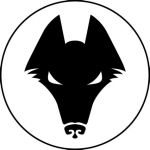Advertisement
Not a member of Pastebin yet?
Sign Up,
it unlocks many cool features!
- Long before Colovia graced Tamriel with its presence, the lands commonly known by the aforementioned term were divided among many peoples of differing origins and cultures. The “proper” ancestors to the modern Colovians emerged from the descendants of those Proto-Nedic tribes that had ended their continent-wide migrations in what are now the Colovian Highlands, a long and wide system stretching from the coastal regions of Goldmoor and the Gold Coast in the southwest, to the western Jerall Mountains in the northeast.
- Tied deeply into the fabric of central-western Tamriel, the Colovian Highlands saw interaction between many Nedic peoples. Prior to the Proto-Colovian period, the ethnic dynamic of the Highlands was far less concrete, with nomadic tribes migrating all over the region. These tribes were by no means a unified entity, neither in organisation nor origin. It is likely that some were related more to the Deathlands Nedes of the west, or even Kreathmen. The tribes that we today may know as the Colovians were a relatively minor factor during this early period, existing in the region alongside many other peoples. The Proto-Colovians likely formed tribal confederacies among themselves, allowing them to slowly expand their reach and assert influence over the neighbouring tribes and clans. Some of this influence was forced through with the sword, but the proto-Colovians were not foreign to trade and diplomacy.
- As the original highlanders kept no written records, we are left with little in the way of information regarding the true origin of the original Colovian line. According to some oral traditions, the particular tribe from which all Colovians hail was founded by one Kolav, an ancient highlander king who supposedly lived at Cloud Top. Coinciding with the old myths, the Larich Manuscript, discovered in Skingrad in 1E 525, speaks of the brothers Kolav and Rum. Much like in the old tales, Kolav ruled from Cloud Top. His younger brother Rum grew envious of his power and challenged him, but Kolav proved too powerful, defeating Rum and forcing him into exile to the East along with his companions. Rum and his followers settled around Lake Rumare, laying the foundation for the Nibenese civilisation.
- There is certainly some truth in the old myths; the original (Proto-)Colovian sphere likely did centre on Cloud Top and the surrounding land during the initial stages of Colovian cultural evolution, as archaeological research found so far. Throughout the Middle Merethic Era, there is evidence of a new material culture replacing the more localised cultures throughout the wider region. At the onset of the Late Merethic Era and the rise of the first settlements, hillforts began emerging throughout Old Colovia, including Cloud Top. This network soon grew in the south-western direction, towards the river Brena. This new expansion was likely paramount in Colovia’s eventual rise to prominence as the banks of the upper Brena allowed for limited agriculture, leading to a population explosion and giving Colovians the first taste of what was to come.
- The shift towards the Brena coincided with the ascension of the Lion Pelt Warlords around the 19th century of the Middle Merethic Era. The name of said kings, already attested in some Stridentine Ayleid texts of the time, itself symbolises this trend. Succeeding the Bear Pelt Kings of the old, these new rulers not only lived in a region – the upper Brena Valley, to be exact – where lions were the prevalent target for young men to prove their strength and ability, but also where the climate allowed for lion pelts to be worn in place of the heavy bear pelts worn higher up the Colovian slopes. The rise of the Brena kingdoms marks the end of the Proto-Colovian period. Once the original tribal confederation expanded to include the Brena tribes, a boom in population was inevitable, kickstarting what we know as the Great Colovian Migration.
- The Ayleid writer Maracan writes in his famed chronicles that “[…] a plague tore across the land, originating in the north.” Unlike the plague that had ravaged that same region the year prior, of which Maracan had much to write about for it devastated his home city-state, the “plague” in question came in the form of “manfolk of the mountains” – waves of men descending from the highlands.
- The Colovian invaders tore through the fabric of the old West Weald, bringing down long-lasted dynasties and proud, independent peoples. The masses of newcomers largely conquered through peaceful means, winning over the indigenous population through numbers alone. Nevertheless, this era of migrations was marked with constant skirmishes and wars. Through the efforts of the warlords Natal, Maranax and Rulav, the frontier of settlement extended all the way to the eastern jungles, subjugating vast river kingdoms. Maranax and his axemen pushed the line of settlement to the edge of the Great Forest, establishing a fort at what would become Chorrol. Further southwards, the Colovian bands under Rulav the High ravaged the kingdom of the Fallinexani, finishing what the great Tun-Hoot had begun once He had learned of the ivory jewelry crafted by the great artisans of Fallin. Following in His large footsteps, they cut right through the once mighty kingdom on the river Carmala.
Advertisement
Add Comment
Please, Sign In to add comment
Advertisement

